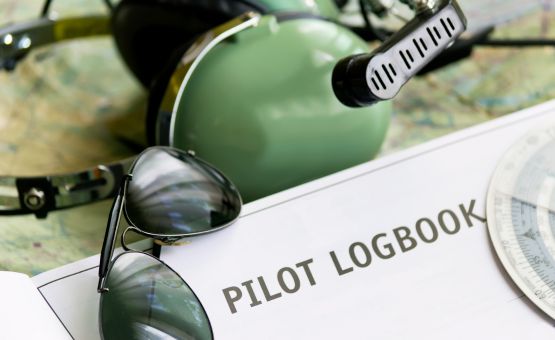By Chris Webb
I’ve seen all sorts of logbooks over the years; big ones, small ones, green ones and orange ones. I’ve heard myths and rumors of what logbooks ought to be. I have seen them with various colors of ink, cross-outs, white-out and even taped in pages. There have been logbooks with too many hours and too few hours and hours that should have never been.
Remember a logbook is a record of your flying experience. It is proof of what you have accomplished as well as what you are capable of doing during your professional pilot program. The regulations are quite simple when it comes to logging of hours. 14 CFR 61.51 only requires pilots to log what is needed for a check ride or for currency in the professional pilot program. (Of course this is paraphrased) . The only other requirement is that the logging of hours needs to be done in a way that is acceptable to the FAA . This means that your log entry should include things such as date, places, aircraft, day or night, VFR or ‘IFR’, cross country…
So, maybe using a stack of paper towels to write on isn’t the best idea, but you don’t have to go out and spend big bucks on expensive log books either. Several companies make logbooks for the pilot who flies sometimes and logbooks for the student undergoing the professional pilot program. If you are savvy with a spreadsheet, you could even create your own logbook or go make one the old school way with some paper and a folder.
Other than that, it is your logbook. If you are looking for a professional career, then use your best handwriting and do your best to avoid mistakes. When a mistake is made, be proper and clean about correcting the error. If you want to fly for yourself, then you do not have to put as much emphasis on the logbook. Just remember that you do need it to be legible enough to prove your currency to the FM ,as well as to your insurance agency. Any time you get in an aircraft, take your logbook and record those hours. If there is an instructor present then you can have the record certified on the spot.
Make sure you revisit past hours. I like to use the 100-hour mark. Every 100 hours you fly, stop and look back. Flip through the pages of your logbook and mentally relive those flights. See if there are any clerical errors. This way, you learn from your past mistakes. Lastly, keep your logbook in a safe place. Unless you are actively training, you do not have to keep your log book on you in person . I keep my official logbook in a fireproof safe. I keep a small ‘notes’ logbook in my flight bag, that way I can keep accurate times of the flight. Then, once a month, I transferthe hours over to the master logbook. It is your logbook. It is a history of your adventure in flying. Keep a record and learn from your past.
Just think about how lucky we are as pilots in a professional pilot program. What other chain of events in your life are recorded and commemorated on a regular basis in a book. Every hour you fly, every place you visit and every airplane that took you there is all recorded for posterity. In 50 or 60 years from now, you can sit back and relive some of the most memorable moments of your life. Better yet, you can share your experiences and stories with others, all narrated by your logbook.










